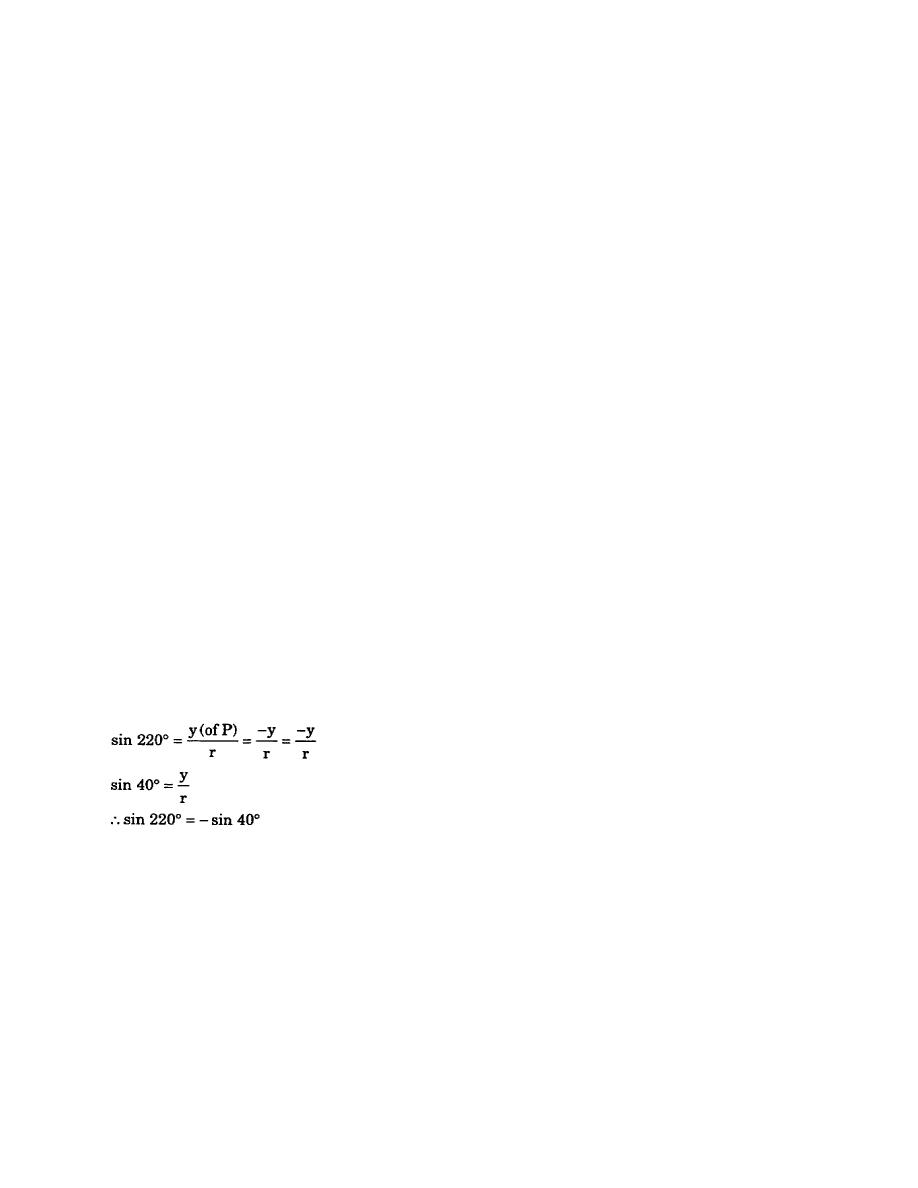
the line X1X will be the side opposite the angle, and the distance from the center of the circle to where
the perpendicular line intersects the line X1X will be the side adjacent. Note that as the angle increases,
the side opposite the side adjacent decreases until at 90 the side opposite is a radius and coincides with
the line AY. As the angle increases from 90 to 180, the side opposite will decrease and the side
adjacent becomes a radius and the side opposite is 0. From 180 to 270, the side opposite increases
and the side adjacent decreases until at 270 the side opposite is again a radius of the circle and the side
adjacent is 0. From 270 to 360€, the side opposite decreases and the side adjacent increases until at
360 the two sides are in the position of an angle of 0. From the above, you can see that the side
opposite can be expressed as a y distance and the side adjacent as an x distance.
d. Since the side opposite is essentially a y distance, you can affix positive signs to the sides
opposite of any angle in this circle that lies above the horizontal line X1X. Similarly, the negative sign
can be affixed if the side opposite lies below the line X1X. Likewise, if an angle has its side adjacent on
the right side of the line Y1Y, the side adjacent will be positive; if it lies on the left side of this line, it
will be negative. Applying the above to Figure 4-11, you see that the angles from 0 to 90 have their
side opposite above line X1X and their side adjacent to the right of line Y1Y. Therefore, all angles in the
first quadrant have positive signs affixed to their sides opposite and adjacent. For angles in the second
quadrant (90 - 180, the side opposite is still above the line X1X, but the side adjacent is to the left of
line Y1Y. Angles in quadrant II have positive sides opposite and negative sides adjacent. In the third
quadrant (180€ - 270), the side opposite is below the line X1X, and the side adjacent is still to the left of
line Y1Y. These angles have negative sides opposite and adjacent. For angles in quadrant IV (270 -
360, the side opposite is still below the line X1X, but the side adjacent is again to the right of line Y1Y.
Therefore, the side opposite is negative, and the side adjacent is positive. The hypotenuse of any right
triangle is always considered to be positive.
e. It is always possible to express any one of the six trigonometric functions of any angle as a
plus or minus trigonometric function of a positive angle less than 90. Consider the problem of
expressing the functions of 220 in terms of functions of an angle less than 90. Referring to Figure 4-
12, observe the following:
f. The functions of any angle in the second quadrant (90 - 180) can be found by using the
above principles combined with the principles of supplementary angles.
EN0591
4-18



 Previous Page
Previous Page
